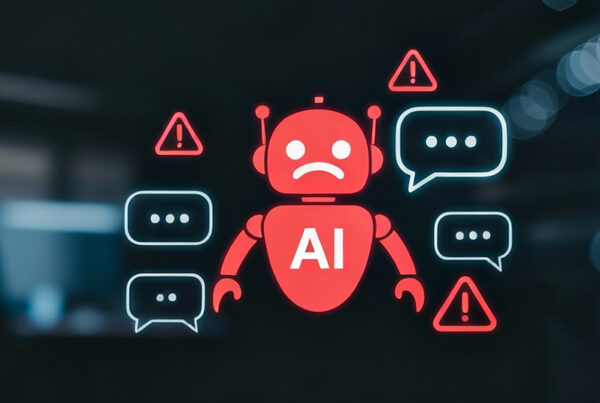
Artificial Intelligence (AI) has transformed industries, from healthcare to finance, by making predictions, automating tasks, and uncovering insights. However, the effectiveness of AI systems hinges on one critical factor: the quality of the data they learn from. Just as a student’s knowledge is shaped by their textbooks and teachers, AI models rely on datasets to develop their understanding and decision-making abilities. If the data is inaccurate, incomplete, or biased, the AI’s outputs will reflect those flaws, leading to potential errors and unintended consequences. This article explores why AI is only as good as the data it learns from and how ensuring high-quality data is essential for building trustworthy and effective AI systems.
The Make-or-Break Role of Data in AI
AI development depends entirely upon data, which determines the level of accuracy within an AI model system. Machine learning algorithms do not possess inherent intelligence; instead, they recognize patterns and make decisions based on the data they are trained on. If this data is diverse, well-structured, and representative of real-world scenarios, the AI model can make more precise predictions and generalize well to new inputs. However, when the data is flawed—containing errors, gaps, or biases—the AI model will inevitably inherit and amplify these weaknesses, which can result in skewed outcomes.
For forecasting, AI models need extensive training with large datasets to recognize hidden patterns that people cannot detect. Accurate data ensures models learn proper relationships, which enables them to uncover data patterns. Otherwise, the AI system may fit itself to data inconsistencies during training. Precise data enables developers to construct trustworthy systems optimized for reliable results.
Garbage In, Garbage Out: The Impact of Poor Data
The principle of “Garbage In, Garbage Out” is a fundamental truth in AI development—if an AI model is trained on poor-quality data, it will produce poor-quality results. Incorrect data inputs can trigger AI models to produce faulty data classifications, deliver untrustworthy predictions, and preserve current bias patterns, among other problems. This can have far-reaching consequences, particularly in high-stakes fields like healthcare, finance, and criminal justice, where decisions made by AI systems can impact lives and society as a whole.
The deployment of AI which is negatively influenced by insufficient data quality has both legal and ethical consequences that can produce societal, moral and monetary impacts. Data collection which generates inequality and bias in databases allows discrimination to spread into important domains including financial lending, personnel recruitment, and public policing operations. AI models that perform credit scoring, law enforcement work, and healthcare work may risk causing disadvantages to specific groups. Hiring tools powered by AI trained on biased historical hiring records may continue existing prejudices when selecting candidates. Medical diagnostic tools that employ AI and receive training from limited or unrepresentative patient information may develop inaccurate diagnoses that affect minority patient groups. Facial recognition systems can misidentify demographic groups.
Finally, the application of insufficient or noisy data that leads AI models to perform unpredictable or unreliable operations lowers trust in AI-driven systems and ultimately deteriorates public belief in them.

5 Real-World Examples of Data-Driven AI Failures
AI system effectiveness depends significantly on the quality of data during learning. Real-world failures can occur from faulty or biased datasets and can even lead to significant unintended or negative outcomes. Five significant instances of AI system malfunction demonstrate the importatance of data quality and representativeness for sound AI development.
- Amazon’s AI Recruiting Tool – Analyses of AI-led hiring at Amazon revealed unfavorable results for female candidates. Since the system wastrained usingresumes from male candidates who had submitted applications to Amazon during a ten-year period, it showed preference for male candidates. Meanwhile, the AI system scored resume content with female terminology such as “women’s football” and “female-oriented” negatively. Amazon’s historical hiring record, withsmale candidates outnumbering female ones, influenced its hiring algorithm to develop a gender-based prejudice.
- COMPAS Recidivism Risk Assessment – COMPAS technology, which implements risk assessments within the U.S. criminal justice system, triggered criticism because it classified Black defendants as higher risks than white defendants despite matching criminal background features. This bias emerged because the collected data presented previous racial discrepancies within policing and criminal justice systems.
- Google Photos and Racial Bias – Google Photos experienced an AI mistake that misidentified Black people as gorillas in 2015 because its training data suffered from bias. Although the AI application received training with countless images, it failed to incorporate sufficient diversity of racial profiles, resulting in classification errors. Thiss situation demonstrated problems associated with insufficient data variability and potential negative consequences in important systems.
- Tesla’s Autopilot Crashes – Tesla’s Autopilot system has experienced several crashes because its sensors misunderstood vehicle data while providing assistance to drivers. A fatal accident occurred when Autopilot misread a white truck in front of it on a clear sunny day because a shortage of training data that combined white trucks with particular light conditions.Microsoft’s Tay Chatbot – Microsoft created a Twitter chatbot called “Tay” for public interactions in 2016 which was meant to learn from human contacts. Even before 24 hours had elapsed, the chatbot initiated a sequence of offensive and racist tweets. The system’s failure happened due to acquired information through user conversations where several individuals exposed it to damaging biased content. The absence of acceptable data filtering and inappropriate curation practices caused the chatbot to duplicate harmful actions and extend toxic behavioral patterns.
Key Data Quality Issues to Watch for in AI Training
Among many data quality challenges, five key issues—inaccuracy, incompleteness, inconsistency, duplication, and bias—can significantly impact an AI system’s performance and fairness. Below, we explore these issues in greater detail and discuss how they can be mitigated.
- Inaccurate Data – The input of inaccurate data, age-dated information, and wrong label classifications which misguide AI models. Training AI systems with flawed data sets makes them learn inappropriate patterns which creates results that cannot be trusted. For example, patient health risks appear when medical diagnosis AI systems use incorrect disease labels in training data.
- Incomplete Data – The presence of missing values and incomplete records degrades the dataset quality so AI models fail to acquire complete patterns from the data. In the absence of crucial attributes, the AI platform could generate biased interpretations as well as prediction inaccuracies. Customer personalization and targeting activities deteriorate when demographic information is absent. Three approaches to solve the problem of missing values include imputation to estimate missing values, dropping incomplete records when possible, and improving methods used to collect data.
- Inconsistent Data – Data inconsistencies including various naming formats, measurement units, and format types pose challenges for AI models when they try to correctly interpret and learn from the data. For example, a lack of conversion from kilograms to pounds in two out of multiple datasets can lead AI to develop faulty assumptions. The combination of standardized data formats with clear input guidelines linked to automatic validation systems helps minimize data inconsistencies.
- Duplicate Data – Duplicate records can inflate the presence of certain data points, leading to overrepresentation and biased learning. The incorrect application of duplicated training samples by AI models leads to abnormal prioritization of training patterns. Problems occur when AI systems need to detect genuine fraud patterns because duplicated fraud cases mislead their fraud recognition capability. To preserve dataset integrity, data deduplication methods help identify duplicate records which should be merged.
- Bias in Data – AI training data bias develops from proportionate or disproportionate representation of individual groups which eventually produces misleading or unfair results. Training AI models on bias-heavy data causes systems to support current patterns of societal inequality. The training of facial recognition AI using mainly light-skinned faces produces poor results when processing dark-skinned faces, thus violating potential discrimination laws. Equitable model outcomes need diverse datasets alongside fairness audits and bias adjustments.
How Can You Guard Against These and Other Data Quality Issues?
To build reliable and fair AI systems, companies must actively address data quality issues that can impact model performance. By implementing robust data management strategies, standardizing data collection, and continuously monitoring for errors, organizations can ensure that their AI models are trained on accurate, consistent, and unbiased data. Below are key steps companies can take to guard against these common data quality challenges.
- Implement Rigorous Data Validation and Cleaning – The detection and correction of inaccurate, incomplete and inconsistent data t can be achieved through automated tools and frameworks. Data profiling along with anomaly detection methods and rule-based validation allow organizations to detect errors prior to their effect on AI training procedures.
- Deduplicate Data – Programs for data deduplication help eliminate repeated records to lower sample bias that occurs from overexposure. Data management systems should include effective identification of duplicate records for merging operations without losing vital information.
- Address Bias Through Diverse and Representative Datasets – Companies should establish diverse and statistically proper real-world population data sets to reduce bias. Enhancing data representation requires organizations to obtain supplemental information while they maintain balanced minority groups in the dataset for conducting impartiality assessments. Testing AI models must include checks for biased outputs while algorithmic improvements need to be made.
- Conduct Continuous Data Monitoring and Auditing – After deployment, new data quality problems need to be monitored through AI models using both high-quality training data and automated monitoring tools. Automated monitoring systems and periodic performance audits of models enable organizations to find and fix problems before their influence on decisions occurs.
- Establish Strong Data Governance Policies – Data governance with clear definitions controls quality and maintains accountability. A high-quality dataset maintenance program employs data stewards together with compliance standards enforcement as well as periodic updates to data policies.
The Critical Role of Quality Data in AI Success
The Salesforce platform, alongside other AI systems, reaches peak efficiency based on the quality of data used in their training process. The accuracy of predictions along with tangible world effects depends on high-quality, diverse and representative data. The future development of AI-driven industries demands active attention to data integrity through continuous data diversity maintenance, dataset revisions, and bias reduction. The complete realization of AI potential requires organizations to develop data-driven habits which will establish user trust and drive beneficial effects on business results and society.










